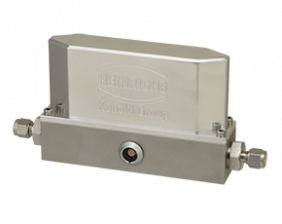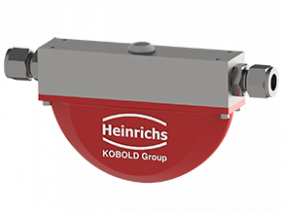KOBOLD Instruments Inc • 1801 Parkway View Drive • 15205 Pittsburgh, PA • Tel: +1 412 788 2830 • E-mail: info@koboldusa.com • visit koboldusa.com

Caudalímetro Coriolis HPC
Para aplicaciones de BAJO CAUDAL
Rango de medición: 0 - 20 kg/h ... 0 - 50 kg/h
Conexión: ½" NPT hembra, G½ macho, Gyrolok®/Swagelok® 6/8/10/12 mm
Material:
Tubos de medición en acero Inox. 1.4571
Cuerpo en acero inox. 1.4404
Partes segudarias en aluminio, Acero inox.
pmáx: PN400
Rango de temperatura: -40 ... +180°C
Precisión:
±0.1 % de la lectura ± estabilidad punto cero líquidos
±0.5 % de la lectura ± estabilidad punto cero gases
±0.005 g/cm³ densidad
Transmisor:
Certificación ATEX, IECEx
analógica (HART®), binario, pulsos salida de estado
Características:
Resistente a la vibración, cuerpo muy rebusto, concepto de construcción y montaje variable


Hoja de datos
Instrucciones de operación
Varios
Descargas
Function
The coriolis mass flowmeter HPC works according to the coriolis principle. Mass flow, density and temperature are being measured simultaneously. The volume flow can be calculated from these measurements. HPC mass flow sensors are only available with remote transmitter.
For the measurement of very small flow rates it is common practice to use single pipe coriolis flowmeters. However, with the use of just one measuring pipe the influence of external interferences increases dramatically, often necessitating a costly decoupling. The HPC uses a dual bent pipe measuring system. Furthermore, the sensor coils are not mounted on the measuring pipes anymore but between the pipes. This provides the sensor with a significantly noise-reduced and predictable dynamic behavior, capable of working at higher frequencies, thus further decoupling the sensor measurement from external vibrations.
With these characteristics the HPC coriolis sensor is therefore not only extremely accurate, but also particularly resistant against external interferences. The sensor is therefore very suited for very low flow measurements for all applications for nearly all liquids.






